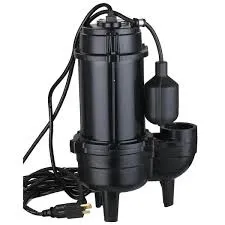Haitian Creole
- Afrikaans
- Albanian
- Amharic
- Arabic
- Armenian
- Azerbaijani
- Basque
- Belarusian
- Bengali
- Bosnian
- Bulgarian
- Catalan
- Cebuano
- Corsican
- Croatian
- Czech
- Danish
- Dutch
- English
- Esperanto
- Estonian
- Finnish
- French
- Frisian
- Galician
- Georgian
- German
- Greek
- Gujarati
- Haitian Creole
- hausa
- hawaiian
- Hebrew
- Hindi
- Miao
- Hungarian
- Icelandic
- igbo
- Indonesian
- irish
- Italian
- Japanese
- Javanese
- Kannada
- kazakh
- Khmer
- Rwandese
- Korean
- Kurdish
- Kyrgyz
- Lao
- Latin
- Latvian
- Lithuanian
- Luxembourgish
- Macedonian
- Malgashi
- Malay
- Malayalam
- Maltese
- Maori
- Marathi
- Mongolian
- Myanmar
- Nepali
- Norwegian
- Norwegian
- Occitan
- Pashto
- Persian
- Polish
- Portuguese
- Punjabi
- Romanian
- Russian
- Samoan
- Scottish Gaelic
- Serbian
- Sesotho
- Shona
- Sindhi
- Sinhala
- Slovak
- Slovenian
- Somali
- Spanish
- Sundanese
- Swahili
- Swedish
- Tagalog
- Tajik
- Tamil
- Tatar
- Telugu
- Thai
- Turkish
- Turkmen
- Ukrainian
- Urdu
- Uighur
- Uzbek
- Vietnamese
- Welsh
- Bantu
- Yiddish
- Yoruba
- Zulu
Telephone: +86 13120555503
Email: frank@cypump.com
Oct . 10, 2024 15:18 Back to list
china rubber lined slurry pump
Understanding China’s Rubber-Lined Slurry Pumps A Comprehensive Overview
Chinese manufacturers have made significant strides in the production and innovation of industrial equipment, and one crucial piece of machinery within various sectors is the rubber-lined slurry pump. These pumps play a vital role in transferring abrasive and corrosive materials in various industries, including mining, metallurgy, and wastewater treatment. This article aims to explore the features, benefits, and applications of rubber-lined slurry pumps manufactured in China.
What are Rubber-Lined Slurry Pumps?
At their core, rubber-lined slurry pumps are designed specifically for transporting slurry—mixtures of liquid and solid particles. The rubber-lined aspect indicates that the internal components of the pump, particularly the casing, impeller, and throat bush, are coated with rubber. This lining is essential for protecting the pump's metal components from wear and corrosion caused by abrasive materials in the slurry.
Materials and Design Features
The rubber linings utilized in these pumps are typically made from high-quality natural or synthetic rubber, engineered to withstand the harsh conditions presented by slurries. The specific composition and thickness of the rubber can be tailored to the application, providing enhanced longevity and performance. For instance, the use of high abrasion-resistant rubber can significantly extend the lifespan of the pump when handling highly abrasive materials.
Furthermore, the design of these pumps is optimized for efficient fluid dynamics. Features such as an adequate impeller design, proper spacing, and alignment contribute to minimizing energy consumption while maximizing throughput. Chinese manufacturers utilize advanced computational fluid dynamics (CFD) simulations during the design phase to ensure optimal performance.
Advantages of Rubber-Lined Slurry Pumps
1. Corrosion Resistance The rubber lining provides an effective barrier against corrosive substances, thus ensuring that the internal components remain intact and functional for a more extended period.
china rubber lined slurry pump

3. Cost-Effectiveness Although the initial investment may be higher than non-lined alternatives, the longevity and reduced maintenance requirements of rubber-lined pumps often translate into lower overall operating costs.
4. Versatility These pumps can handle various types of slurries, ranging from mineral slurry in mining to wastewater sludge in treatment plants, making them incredibly versatile for industrial applications.
5. Noise Reduction Rubber linings also contribute to noise reduction during operation, enhancing workplace safety and comfort.
Applications in Various Industries
Rubber-lined slurry pumps find applications across a multitude of industries. In the mining sector, they are primarily used for transporting mineral slurries, tailings, and other abrasive materials. In metallurgy, these pumps are employed to manage the flow of slurries during ore processing.
In the wastewater treatment industry, rubber-lined pumps facilitate the movement of sludge and other waste materials, ensuring efficient processing and treatment. Their durability and efficiency make them suitable for handling diverse slurry compositions, promoting sustainability and operational efficiency.
Conclusion
The rise of rubber-lined slurry pumps in the industrial landscape, particularly in China, showcases a blend of engineering ingenuity and practical application. These pumps not only enhance operational efficiency but also reduce long-term costs, making them a staple in industries where the transportation of slurry is vital. As technology continues to evolve, one can expect improvements in materials, design, and efficiency, further solidifying the importance of rubber-lined slurry pumps in modern industrial processes. Whether for mining, wastewater treatment, or other applications, these robust machines demonstrate the ongoing commitment of Chinese manufacturers to quality and innovation in industrial equipment.
-
Heavy-Duty Mining Sludge Pumps - Wear-Resistant Slurry Handling
NewsAug.02,2025
-
Horizontal Split Case Pump with GPT-4 Turbo | High Efficiency
NewsAug.01,2025
-
ISG Series Pipeline Pump - Chi Yuan Pumps | High Efficiency, Durable Design
NewsAug.01,2025
-
Advanced Flue Gas Desulfurization Pump with GPT-4 Turbo | Durable & Efficient
NewsJul.31,2025
-
ISG Series Vertical Pipeline Pump - Chi Yuan Pumps | Advanced Hydraulic Design&Durable Construction
NewsJul.31,2025
-
ISG Series Vertical Pipeline Pump - Chi Yuan Pumps | Energy Efficient & Low Noise
NewsJul.31,2025










